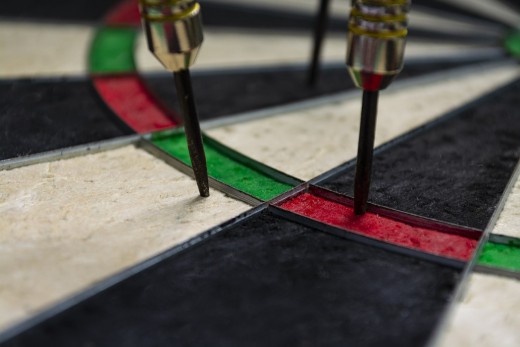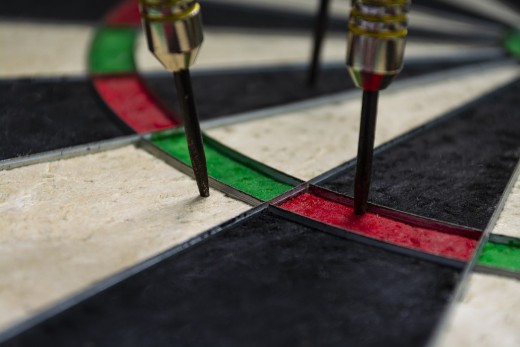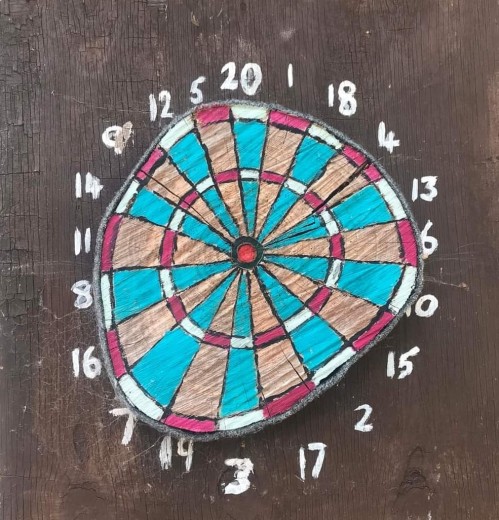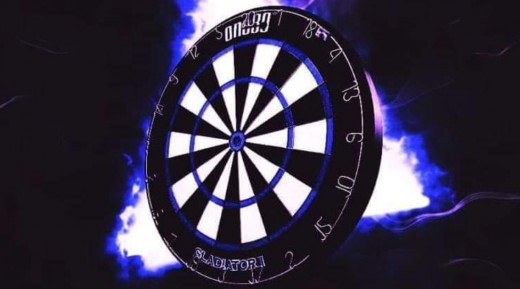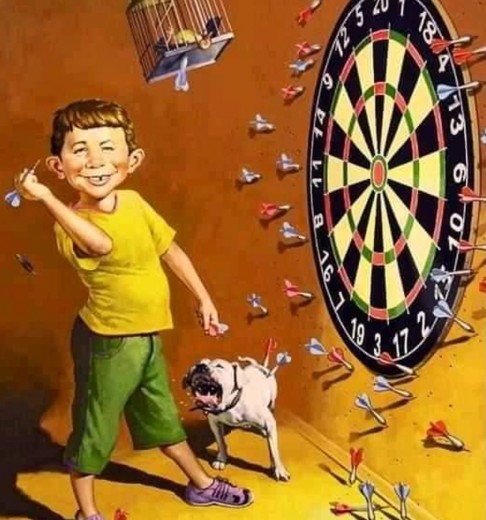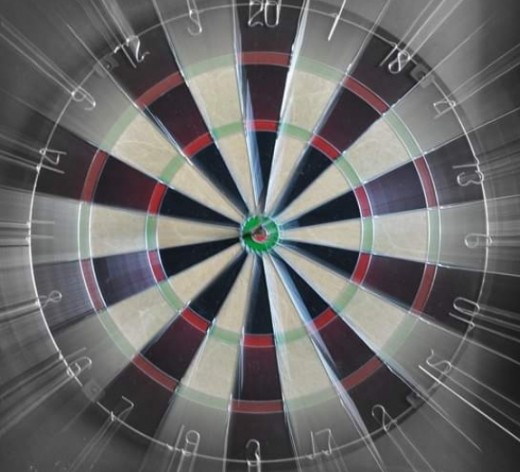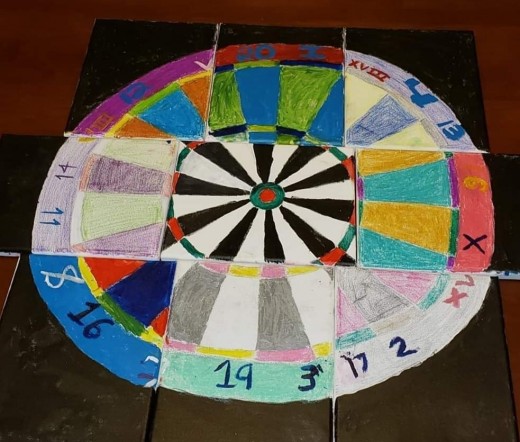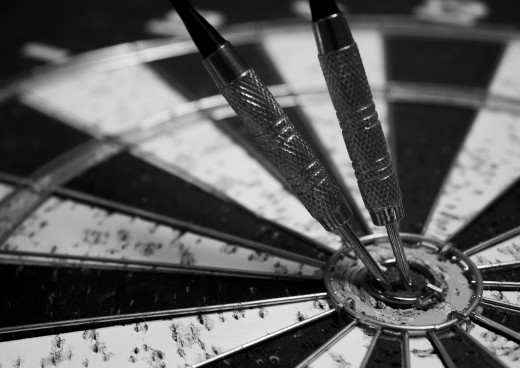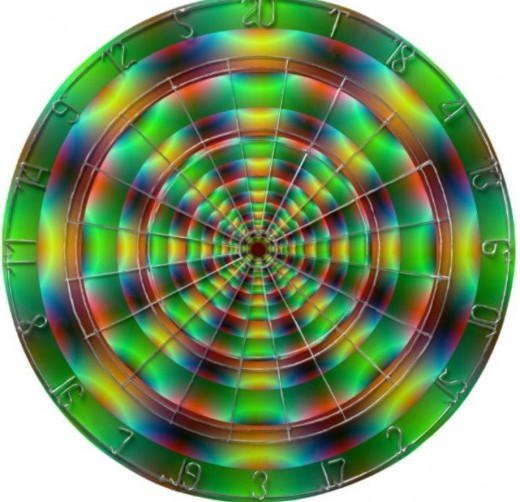Saturday, January 2, 2021
Column CM97
The Final of the 2003 PDC World Championship
The final of the 2003 PDC World Championship counts – along with the inaugural world championship final and the 2008 women’s final – among the best darts matches in the history of the sport and, as in the Women’s final it interrupted an era. And there is another parallel – for the first time a player not from England, not even from Europe in this case, won the PDC World Championship.
In 2003 the PDC World Championship still took place in the Circus Tavern in Purfleet. Smoking was still permitted, international fans were rare and most people who watched on TV were from the UK .
The number of participants was 40. There were a few international qualifiers – one from Australia, one from the Netherlands and one from the USA. As today, a PDPA qualifier was played and that year four tournament places were allocated.
Qualifying as well was the winner of the SP 9-Dart Challenge. The other participants (32) qualified by the Order of Merit. The top 16 were seeded and entered the tournament in the Second Round.
Interesting, as a side-line: the Australian qualifier was Simon Whitlock who joined the BDO in 2004 – and he defeated Peter Manley in the second round before he was eliminated in the third round by Richie Burnett. Besides Steve Beaton, Whitlock was the only player who still took part in the PDC World Championship this year.
Interesting as well: among the PDPA qualifiers was Al Hedman, the brother of Deta Hedman (who was Deta’s inspiration to take up the sport of darts). He’s been retired for a long time already. So Deta is the second Hedman playing in a PDC World Championship.
Also quite interesting: John Lowe, who lost in the inaugural World Championship final in 1978 against Leighton Rees, was still among the participants in a World Championship in 2003 – though it was the PDC World Championship now, as he was one of the players who in 1993 turned away from the BDO to found the PDC (at that time WDC).
Meanwhilw, in the BDO Women’s World Championship it was for many years quite clear that Trina Gulliver would win there was no doubt whatsoever that it was Phil Taylor who would win the PDC World Championship title.
With the exception of the inaugural tournament Taylor had won all eight editions and everybody expected he would win his ninth title in a row. Taylor had lost a lot of weight before the tournament. He had added blond strains to his hair and wore a golden earing in his ear.
Taylor went into the tournament as the #1 seed. His later opponent in the final John Part was the #2 seed.
When you review the 16 seeded players you see quite a lot of well-known names like John Lowe (who at the time was the #13 in the PDC Order of Merit), Kevin Painter, Colin Lloyd, Roland Scholten, Wayne Mardle, Cliff Lazarenko, Bob Anderson and Steve Beaton.
Rod Harrington, Alan Warriner (at the time ranked #4 in the world) and Chris Mason changed from active players to commentators as did Wayne Mardle and John Part. Roland Scholten, who was for some time the darts expert on Sport 1, is now the German national coach. Keith Deller managed Adrian Lewis.
As always in a World Championship there were some upsets in the second round in which the top 16 entered the tournament – and Peter Manley, Andy Jenkins, John Lowe and Peter Evison didn’t survive their first match.
From the qualifiers only Simon Whitlock survived the first round. Deta Hedman’s brother Al lost 0-4 to Bob Anderson.
Phil Taylor started his challenge to defend the title with a 4-1 win against American Steve Brown. His average was 103.44. John Part played in the lower half of the draw first against Cliff Lazarenko. He won 4-1 as well but his average was only 88.67.
In the next round Taylor played against Wayne Mardle. It was not an easy game – Mardle won three sets – but in the end Taylor won 5-3 and his average dropped to just under 100.
Part’s second opponent was Scotsman Jamie Harvey. Part won 5-3 as well and he improved his average to 97.
In the quarterfinals Phil Taylor defeated Dennis Smith – who was well known for his interesting throwing style – with 5-3 too and his average was back to over 100. Part’s quarterfinal opponent was Chris Mason and Part on this day was just too good for Mason. He defeated him 5-0 – and perhaps this could have been viewed as a first warning to Taylor that Part could present problems for him.
But probably Taylor didn’t give it a thought as he had destroyed Part two years prior in the final and had beaten him 2002 – both in the World Matchplay and the World Grand Prix.
The fourth of January was semi-finals time in the Circus Tavern and Part was the only player not from England still in the tournament…
This time, Taylor had an easier time than Part – he played against Alan Warriner who was unable to keep up. Warriner lost 1-6 and probably Taylor was not even tired after the match. For Taylor, the win over Warriner was satisfying as Warriner had before the tournament lamented that the PDC only revolved around Taylor and that he was fed up with it – something Taylor put right with his darts.
Part faced Kevin Painter, a much tougher opponent on the day, but won 6-4 and for the second time progressed into the final.
The final took place on the fifth of January – it was a memorable match which lasted almost three hours. The Canadian stormed into a 3-0 lead but after that took a sort of “break” and Taylor had the advantage. But this time he couldn’t get rid of Part and Taylor started to tire…
The match went into a deciding set…
Part won the final 7-6 and interrupted Taylor’s dominance in the PDC at least for some time. Taylor averaged in the final 99.89, Part 96.86.
In the following year everything was back to business as usual…
Taylor won the title another six times, the last time in 2013 (and also twice stood in the final). Part won the World Championship once again in 2008, in the year when the tournament for the first time took place in Alexandra Palace, a completely different world than the smoky Circus Tavern – a venue crammed with partying international fans and which is televised all over the world. In 2003, 610,000 fans watched the final on TV, most of them in the UK and Part earned £50,000 in price money.
It was in 1998 that Part qualified for the first time for the PDC World Championship and until 2016 took part in the event every year. In 1998, he lost in the first round to Paul Lim, who contrary to Part, qualified for this year’s World Championship once again.
Besides Part, over the years many other Canadian players qualified for the PDC World Championship. In 1999, it was Scott Cummings and Gary Mawson – Cummings returned in 2001 together with the first woman to compete in a PDC World Championship, Canadian Gayle King.
Gerry Convery qualified from 2005 – 2008. Rory Orvis appeared in 2004, John Verwey in 2005. In 2008 there was David Fatum. There was Dave Richardson in 2015, Ross Snook in 2017 and Jim Long and Matt Campbell in 2020 and 2021, the latter who played a great match against Scott Waites this year.
Besides Campbell, Jeff Smith stood at the oche this year. He reached the final of the BDO World Championship in 2016 but then switched to the PDC. He qualified 2018 and 2019 as well for the PDC World Championship and got himself a Tour Card in Qualifying School 2020.
Smith seems to improve more and more – as far as one can assess it in this Corona year. In the Summer Series he for the first time stood in a Players Championship semi-final. Together with Matt Campbell he reached the quarterfinals of the PDC World Cup and he for the first time qualified for the PDC World Championship by the Pro Tour Order of Merit.
Smith won his first round match against young Irishman Keane Barry but lost second round in a good match to Chris Dobey. So far, Smith looks like the first Canadian who might be able to follow in John Part’s footsteps – though it is still a very far way to get there.

